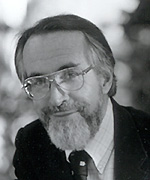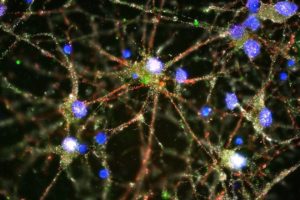Where Did the Schizophrenics Go?
The number drops to 750,000 from 2.8 million, and spending per patient soars.
by Fuller Torrey and Wendy Simmons
March 26, 2019 6:56 p.m. ET
Wall Street Journal
Wondrous are the ways of Washington. In a single day, the federal government officially reduced the number of people with schizophrenia in the United States from 2.8 million to 750,000. With a change of the National Institute of Mental Health website in 2017, two million people with schizophrenia simply disappeared.
The 2.8 million estimate, or 1.1% of the adult population, had been the official standard for the U.S. since the 1980s, when the last major prevalence survey was carried out. The figure was provided to Congress in 1993 and used for national estimates such as the cost of schizophrenia.
NIMH Director Joshua Gordon wrote in the Psychiatric Times that “the 1.1% figure is no longer scientifically defensible” in view of “the most recent findings.” These findings come from a 2001-03 National Comorbidity Survey, which included only those who lived at home and acknowledged symptoms of schizophrenia. It excluded those in hospitals, nursing homes, group homes, jails, prisons, homeless shelters and on the streets. Nor did it include the people with schizophrenia among the 29% who refused to participate in the survey.
In short, the 750,000 estimate, 0.3% of the adult population, was an absurd undercount, obvious to anyone with knowledge of the subject.
Why would a federal health agency want to make two million patients disappear? Welcome to Washington. Administrators spend a lot of time trying to make their agencies look good to the public and especially to Congress, which controls the purse strings. In 2006 Congress ordered the National Institutes of Health to make public how much they spend on each major disease. These figures, along with the number of people affected by each disease, allow anyone to determine quickly the NIH’s research expenditure per patient with schizophrenia, autism or any other disease, and compare them. It can be argued that the quality of the research portfolio is a better metric than expenditure per patient, but the latter is what most advocacy groups use.
In 2016 NIMH spent $254 million on schizophrenia research. With 2.8 million people affected, that was only $90.71 a patient. NIH expenditures for Alzheimer’s disease were $162.98 a patient ($929 million for 5.7 million people) and Parkinson’s disease commanded $173.12 a patient ($161 million for 930,000 patients as of 2020).
This imbalance created a problem for the NIMH. There were two ways to “solve” it: by spending more money on schizophrenia research or by reducing the number of people with schizophrenia.
Thus two million people with schizophrenia disappeared from the figures and voilà—expenditure per patient soared. Even though schizophrenia research funding fell in 2017 to $243 million, the NIMH can now claim to spend a mouth-dropping $324 per person. Call it a Washington victory for schizophrenia patients.
•
 Former Peace Corps Doctor in Ethiopia (1964-66) Fuller Torrey, M.D., is now a research psychiatrist specializing in schizophrenia and bipolar disorder. He is associate director for research of the Stanley Medical Research Institute, the founder of the Treatment Advocacy Center, a professor of psychiatry at the Uniformed Services University of the Health Sciences, and the author of twenty books. He lives in Bethesda, Maryland with his wife Barbara Boyle (Tanzania 1963-65). Ms. Simmons is a research associate at the Stanley Medical Research Institute.
Former Peace Corps Doctor in Ethiopia (1964-66) Fuller Torrey, M.D., is now a research psychiatrist specializing in schizophrenia and bipolar disorder. He is associate director for research of the Stanley Medical Research Institute, the founder of the Treatment Advocacy Center, a professor of psychiatry at the Uniformed Services University of the Health Sciences, and the author of twenty books. He lives in Bethesda, Maryland with his wife Barbara Boyle (Tanzania 1963-65). Ms. Simmons is a research associate at the Stanley Medical Research Institute.
N.B. Having worked with early PCVs in Ethiopia, Fuller is fully qualified (with first-hand experience) to work with ‘schizophrenics’ here at home. JC Note.

Wonderful to observe the curative powers of government policy changes!